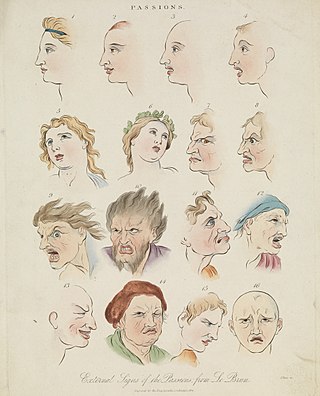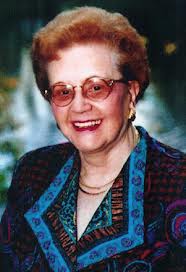Related Research Articles

Emotions are mental states brought on by neurophysiological changes, variously associated with thoughts, feelings, behavioral responses, and a degree of pleasure or displeasure. There is no scientific consensus on a definition. Emotions are often intertwined with mood, temperament, personality, disposition, or creativity.
In organizational behavior and industrial and organizational psychology, organizational commitment is an individual's psychological attachment to the organization. Organizational scientists have also developed many nuanced definitions of organizational commitment, and numerous scales to measure them. Exemplary of this work is Meyer and Allen's model of commitment, which was developed to integrate numerous definitions of commitment that had been proliferated in the literature. Meyer and Allen's model has also been critiqued because the model is not consistent with empirical findings. It may also not be fully applicable in domains such as customer behavior. There has also been debate surrounding what Meyers and Allen's model was trying to achieve.

An attitude "is a summary evaluation of an object of thought. An attitude object can be anything a person discriminates or holds in mind." Attitudes include beliefs (cognition), emotional responses (affect) and behavioral tendencies. In the classical definition an attitude is persistent, while in more contemporary conceptualizations, attitudes may vary depending upon situations, context, or moods.

Hildegard E. Peplau was an American nurse and the first published nursing theorist since Florence Nightingale. She created the middle-range nursing theory of interpersonal relations, which helped to revolutionize the scholarly work of nurses. As a primary contributor to mental health law reform, she led the way towards humane treatment of patients with behavior and personality disorders.
Nursing theory is defined as "a creative and conscientious structuring of ideas that project a tentative, purposeful, and systematic view of phenomena". Through systematic inquiry, whether in nursing research or practice, nurses are able to develop knowledge relevant to improving the care of patients. Theory refers to "a coherent group of general propositions used as principles of explanation".

The theory of planned behavior (TPB) is a psychological theory that links beliefs to behavior. The theory maintains that three core components, namely, attitude, subjective norms, and perceived behavioral control, together shape an individual's behavioral intentions. In turn, a tenet of TPB is that behavioral intention is the most proximal determinant of human social behavior.

The theory of reasoned action aims to explain the relationship between attitudes and behaviors within human action. It is mainly used to predict how individuals will behave based on their pre-existing attitudes and behavioral intentions. An individual's decision to engage in a particular behavior is based on the outcomes the individual expects will come as a result of performing the behavior. Developed by Martin Fishbein and Icek Ajzen in 1967, the theory derived from previous research in social psychology, persuasion models, and attitude theories. Fishbein's theories suggested a relationship between attitude and behaviors. However, critics estimated that attitude theories were not proving to be good indicators of human behavior. The TRA was later revised and expanded by the two theorists in the following decades to overcome any discrepancies in the A–B relationship with the theory of planned behavior (TPB) and reasoned action approach (RAA). The theory is also used in communication discourse as a theory of understanding.
The American Academy of Nursing (AAN) is a professional organization that generates, synthesizes, and disseminates nursing knowledge to contribute to health policy and practice for the benefit of the public and the nursing profession. Founded in 1973, the organization is an independent affiliate of the American Nurses Association (ANA). The organization publishes a bimonthly journal known as Nursing Outlook.

Madeleine Leininger was a nursing theorist, nursing professor and developer of the concept of transcultural nursing. First published in 1961, her contributions to nursing theory involve the discussion of what it is to care.
Social cognitive theory (SCT), used in psychology, education, and communication, holds that portions of an individual's knowledge acquisition can be directly related to observing others within the context of social interactions, experiences, and outside media influences. This theory was advanced by Albert Bandura as an extension of his social learning theory. The theory states that when people observe a model performing a behavior and the consequences of that behavior, they remember the sequence of events and use this information to guide subsequent behaviors. Observing a model can also prompt the viewer to engage in behavior they already learned. Depending on whether people are rewarded or punished for their behavior and the outcome of the behavior, the observer may choose to replicate behavior modeled. Media provides models for a vast array of people in many different environmental settings.
Behavioural change theories are attempts to explain why human behaviours change. These theories cite environmental, personal, and behavioural characteristics as the major factors in behavioural determination. In recent years, there has been increased interest in the application of these theories in the areas of health, education, criminology, energy and international development with the hope that understanding behavioural change will improve the services offered in these areas. Some scholars have recently introduced a distinction between models of behavior and theories of change. Whereas models of behavior are more diagnostic and geared towards understanding the psychological factors that explain or predict a specific behavior, theories of change are more process-oriented and generally aimed at changing a given behavior. Thus, from this perspective, understanding and changing behavior are two separate but complementary lines of scientific investigation.
Marjory Gordon was a nursing theorist and professor who created a nursing assessment theory known as Gordon's functional health patterns. Gordon served in 1973 as the first president of the North American Nursing Diagnosis Association until 1988. She was a Fellow of the American Academy of Nursing beginning in 1977 and was designated a Living Legend by the same organization in 2009.

Ernestine Wiedenbach was a nursing theorist. Her family emigrated to New York in 1909, where she later received a B.A. from Wellesley College in 1922, an R.N. from Johns Hopkins School of Nursing in 1925, an M.A. from Teachers College, Columbia University in 1934, and a certificate in nurse-midwifery from the Maternity Center Association School for Nurse-Midwives in New York in 1946.
Greenberg (1987) introduced the concept of organizational justice with regard to how an employee judges the behavior of the organization and the employee's resulting attitude and behaviour. For example, if a firm makes redundant half of the workers, an employee may feel a sense of injustice with a resulting change in attitude and a drop in productivity.
Fear appeal is a term used in psychology, sociology and marketing. It generally describes a strategy for motivating people to take a particular action, endorse a particular policy, or buy a particular product, by arousing fear. A well-known example in television advertising was a commercial employing the musical jingle: "Never pick up a stranger, pick up Prestone anti-freeze." This was accompanied by images of shadowy strangers (hitchhikers) who would presumably do one harm if picked up. The commercial's main appeal was not to the positive features of Prestone anti-freeze, but to the fear of what a "strange" brand might do.
Sister Callista Roy, CSJ is an American nun, nursing theorist, professor and author. She is known for creating the adaptation model of nursing. She was a nursing professor at Boston College before retiring in 2017. Roy was designated as a 2007 Living Legend by the American Academy of Nursing.
Patricia Sawyer Benner is a nursing theorist, academic and author. She is known for one of her books, From Novice to Expert: Excellence and Power in Clinical Nursing Practice (1984). Benner described the stages of learning and skill acquisition across the careers of nurses, applying the Dreyfus model of skill acquisition to nursing practice. Benner is a professor emerita at the University of California, San Francisco UCSF School of Nursing.
Margaret A. Newman was an American nurse, university professor and nursing theorist. She authored the theory of health as expanding consciousness, which was influenced by earlier theoretical work by Martha E. Rogers, one of her mentors from graduate school. Newman was designated a Living Legend of the American Academy of Nursing.
Winifred W. Logan is a British Nurse theorist who was co-author of the Roper-Logan-Tierney model of nursing, and became an executive director of the International Council of Nurses, and Chief Nurse in Abu Dhabi.
Antonia M. Villarruel is an American nurse. She has served as the Margaret Simon Bond Dean of Nursing at the University of Pennsylvania School of Nursing since 2014.
References
- 1 2 3 4 "Nola J. Pender". University of Michigan . Retrieved November 28, 2014.
- 1 2 Alligood, Martha; Tomey, Ann (2013). Nursing Theorists and Their Work. Elsevier. p. 435. ISBN 978-0323266970 . Retrieved November 28, 2014.
- 1 2 3 4 5 6 7 "The Health Promotion Model Manual" (PDF).
- ↑ Peterson, Sandra; Bredow, Timothy, eds. (2009). Middle Range Theories: Application to Nursing Research. Lippincott Williams & Wilkins. p. 292. ISBN 978-0781785624 . Retrieved November 28, 2014.
- ↑ "Academy Living Legends". American Academy of Nursing . Retrieved November 28, 2014.
- 1 2 McEwen, M.; Wills, E. (2012). Theoretical basis for nursing (4th ed.). Philadelphia: Lippincott, Williams & Wilkins.